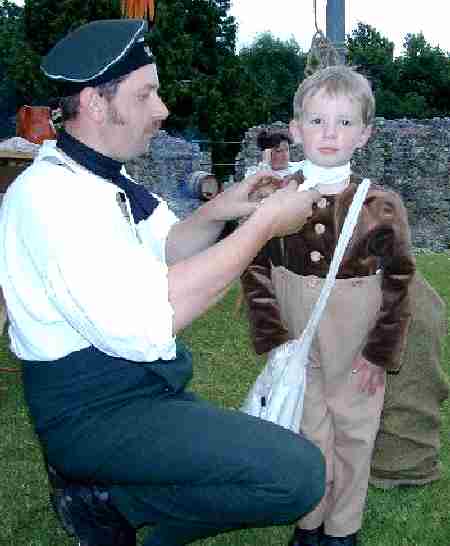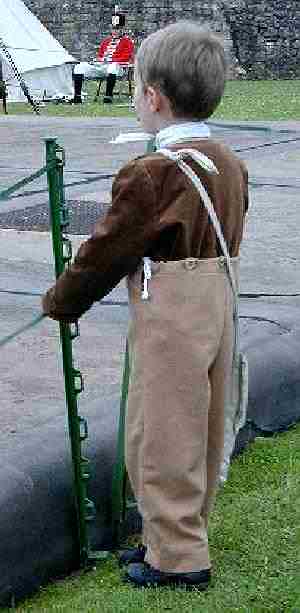
Figure 1.--This soldier and boy were photographed at an English event featuring British troops and their camp followers of the Napoleonic period. Note the skeleton suit style trousers and plush velvet tunic.

Historical re-enaction is popular in Europe. Many cities have parades and processions dating back centuries. Many of these events are elaborately costumed. The Napoleonic era is one of the most important in modern European history, yet the battles and re-enaction events are often neglected.
The young boy pictured here wears a good attempt at a boys skeleton suit. The plush velvet accuaretly depicts the material for a high quality suit. There are, however, a few obvious mistakes. First, the color is not right. While boys clothes by the mid 19th century employed gernerally muted colors, in the early 19th cerntury, very bright colors such as red were often used for a skeleton suit. Second, large buttoms were much more promintely employed. Third, the jacket should have been shorter. Fourth, buttons were used for a kind of dropmdown front to the trousers. Fifth, the trousers should have been slightly shorter to ankle length--often recvealing white socks and strap shoes.
Both English and French boys wore skeleton suits during the late 17th and early 19th centuries. The skeleton suit was the first specialized children's wear in modern Europe. HBC does not know yet if there were significant differences between the English and French suits. HBC believes that the basic style was a pan-European style with only minor differences between countries.

Figure 2.--This is the back of the boy's skeleton suit. |
Navigate the Boys' Historical Clothing Web Site:
[Return to the Main re-enaction page]
[Introduction]
[Activities]
[Bibliographies]
[Biographies]
[Chronology]
[Clothing styles]
[Countries]
[Essays]
[Boys' Clothing Home]
